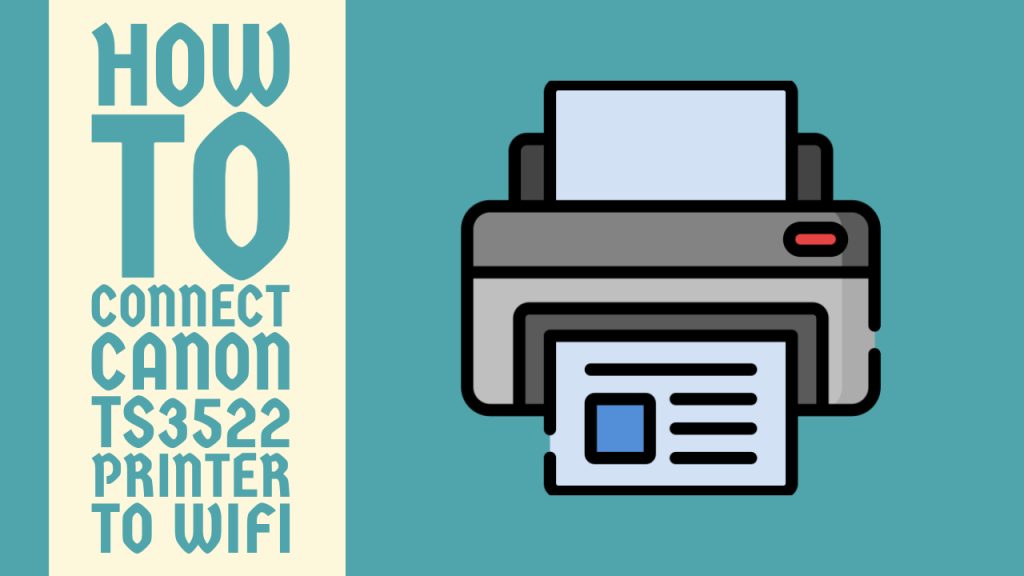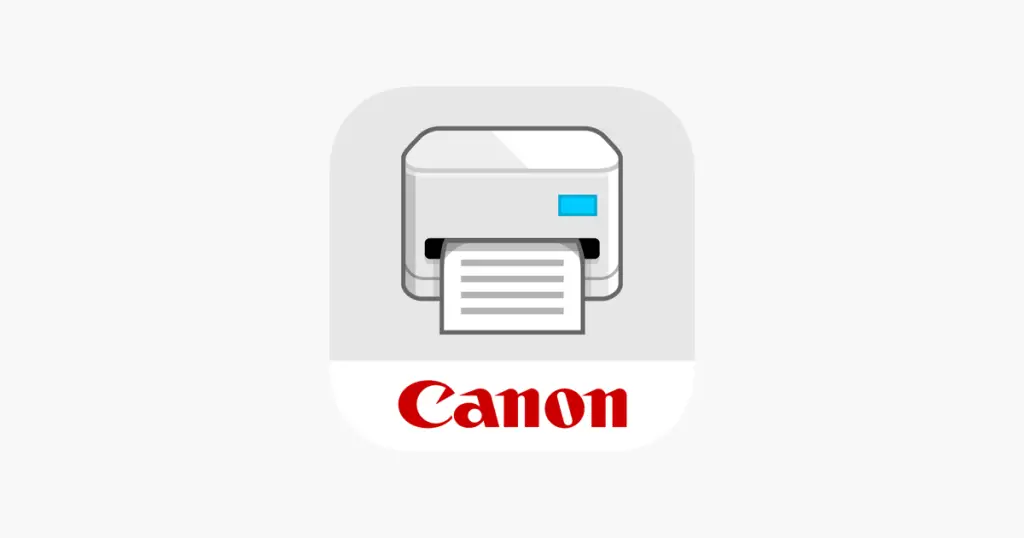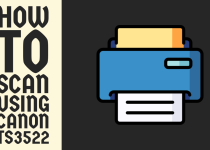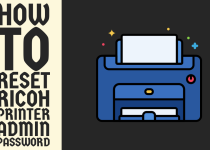How to Connect Canon TS3522 Printer to WiFi – Easy Methods to Follow
In our increasingly interconnected world, a Wi-Fi-enabled printer like the Canon TS3522 can be a game-changer for your home or small office. Gone are the days of being tethered to your printer with cumbersome cables.
By connecting your TS3522 to Wi-Fi, you’ll unlock a plethora of convenient features, from printing directly from your smartphone to accessing cloud printing services. But if you’re feeling a bit daunted by the prospect of setting up a wireless printer, don’t worry – we’ve got you covered.
This guide will walk you through the process of connecting your Canon TS3522 printer to Wi-Fi, breaking it down into easy-to-follow steps. We’ll explore multiple methods, ensuring you can successfully establish a wireless connection regardless of your technical prowess.
Whether you prefer using the printer’s control panel, a smartphone app, or the expeditious WPS method, we’ll provide clear, concise instructions to get you up and running.
How to Connect Canon TS3522 Printer to WiFi

So, let’s demystify the process and get your Canon TS3522 seamlessly integrated into your wireless network.
Method 1: Connecting via the Printer’s Control Panel

One of the most straightforward ways to connect your Canon TS3522 printer to Wi-Fi is by using the printer’s built-in control panel. This method is particularly useful if you prefer a direct approach without relying on additional devices or software.
Step 1: Prepare Your Printer and Network Information
Before you begin the connection process, it’s essential to have all the necessary information and equipment ready. Ensure that your Canon TS3522 printer is powered on and in a ready state.
You’ll also need to know the name (SSID) of your Wi-Fi network and have the network password on hand. Having this information readily available will make the setup process smoother and more efficient.
Step 2: Access the Printer’s Wi-Fi Setup Menu
To start the Wi-Fi setup process, you’ll need to navigate through the printer’s menu system. Begin by pressing the “Setup” button on the printer’s control panel.
Using the arrow keys, navigate to the “Wireless LAN setup” option and press “OK” to select it. From there, choose “Other setup” and press “OK” again. Finally, select “Manual connect” and press “OK” to enter the manual Wi-Fi configuration mode.
Step 3: Select Your Wi-Fi Network
Once you’ve entered the manual connection mode, the printer will begin scanning for available Wi-Fi networks in the vicinity. This process may take a few moments, so be patient. After the scan is complete, you’ll see a list of detected networks on the printer’s display.
Use the arrow keys to scroll through the list until you find your Wi-Fi network’s name (SSID). When you’ve located your network, press “OK” to select it and proceed to the next step.
Step 4: Enter Your Wi-Fi Password
With your network selected, it’s time to enter your Wi-Fi password. The printer’s control panel will display a character input screen. Use the arrow keys to navigate through the available characters, pressing “OK” to select each one as you input your password.
This process might feel a bit tedious, especially if you have a long or complex password, so take your time to ensure accuracy. Once you’ve entered the complete password, navigate to the “Done” option and press “OK” to confirm.
Step 5: Confirm Connection and Complete Setup
After entering your password, the printer will attempt to connect to your Wi-Fi network. This process may take a few minutes as the printer negotiates the connection and obtains network settings. During this time, you’ll see a progress indicator on the printer’s display.
Once the connection is successfully established, the printer will display a confirmation message. Press “OK” to acknowledge the message and complete the setup process.
Step 6: Print a Network Configuration Page
To verify the connection and obtain important network information, it’s a good idea to print a network configuration page. This step will help you confirm that the printer is indeed connected to the correct network and provide you with useful details about the connection.
To do this, press the “Setup” button on the printer’s control panel once again. Navigate to the “Print settings” option and press “OK”. Then, select “Network status print” and press “OK” to initiate the printing process. Once the page is printed, take a moment to review it and confirm that all the Wi-Fi connection details are correct.
By following these steps, you should now have successfully connected your Canon TS3522 printer to your Wi-Fi network using the printer’s control panel. This method is particularly useful when you don’t have access to a smartphone or computer to assist with the setup process.
With your printer now connected to Wi-Fi, you’re ready to enjoy the convenience of wireless printing from any device on your network.
Related Guide: How to Print 2 Pages on 1 Sheet – Easy Ways to Follow
Method 2: Using the Canon PRINT Inkjet/SELPHY App

For users who prefer a more modern, app-based approach, Canon offers the PRINT Inkjet/SELPHY app. This method can be particularly convenient if you plan to print frequently from your mobile devices.
Step 1: Download and Install the Canon PRINT Inkjet/SELPHY App
To begin the setup process using the Canon PRINT Inkjet/SELPHY app, you’ll first need to download and install the application on your smartphone or tablet. If you’re using an iOS device, open the App Store and search for “Canon PRINT Inkjet/SELPHY”.
For Android users, head to the Google Play Store and perform the same search. Once you’ve found the app, tap the “Install” button to download and install it on your device. The app is free and should only take a few moments to install, depending on your internet connection speed.
Step 2: Prepare Your Printer for Setup
Before launching the app, make sure your Canon TS3522 printer is powered on and in a ready state. It’s important to ensure that the printer is not currently engaged in any printing, scanning, or copying tasks.
Additionally, verify that your smartphone or tablet is connected to the Wi-Fi network you intend to use with the printer. This step is crucial as the app will use your device’s current Wi-Fi connection to configure the printer.
Step 3: Launch the App and Start the Printer Setup Process
Once the app is installed and your printer is ready, open the Canon PRINT Inkjet/SELPHY app on your mobile device. When you launch the app for the first time, you’ll be greeted with a welcome screen. Tap the “Start” or “Get Started” button to begin the setup process.
The app will then ask for permission to access your device’s location. It’s important to grant this permission, as it’s necessary for discovering nearby printers and Wi-Fi networks.
Step 4: Select Your Printer Model
After granting the necessary permissions, the app will begin searching for printers on your network. Since your Canon TS3522 isn’t connected to Wi-Fi yet, it likely won’t appear in this initial search. Don’t worry – this is expected.
Look for an option that says something like “Printer is not registered, Set up the printer” or “Add printer” and tap it. You’ll then be presented with a list of printer series. Scroll through the list and select the “TS” series, then choose the specific “TS3522” model from the subsequent list.
Step 5: Connect the Printer to Wi-Fi
Now that you’ve selected your printer model, the app will guide you through the process of connecting the printer to Wi-Fi. Follow the on-screen instructions carefully. Typically, this involves pressing a combination of buttons on the printer to put it into a connection mode.
The app will provide detailed instructions for this step, often with accompanying illustrations to help you locate the correct buttons on your printer.
Step 6: Select Your Wi-Fi Network and Enter the Password
Once your printer is in the correct mode, the app will prompt you to select your Wi-Fi network from a list of available networks. Tap on your network’s name to select it. You’ll then be asked to enter your Wi-Fi password. Take care to enter this correctly, as any mistakes will prevent the printer from connecting. After entering the password, tap the “Connect” or “Next” button to proceed.
Step 7: Complete the Setup and Test the Connection
The app will now send the Wi-Fi information to your printer and attempt to establish a connection. This process may take a few minutes, so be patient. Once the connection is successful, you’ll see a confirmation message in the app.
To ensure everything is working correctly, try printing a test page directly from the app. Look for a “Test Print” or similar option in the app’s menu. If the test page prints successfully, congratulations! Your Canon TS3522 is now connected to Wi-Fi and ready for wireless printing.
Using the Canon PRINT Inkjet/SELPHY app to connect your TS3522 printer to Wi-Fi offers a user-friendly experience, especially for those comfortable with smartphone apps. This method also has the added benefit of familiarizing you with the app, which you can continue to use for easy mobile printing in the future.
Related Guide: How to Print 4 Pages Per Sheet – Easy Ways to Follow
Method 3: Connecting via WPS (Wi-Fi Protected Setup)

For users whose routers support WPS (Wi-Fi Protected Setup), this method offers a quick and simple way to connect the Canon TS3522 printer to Wi-Fi. WPS allows for a secure connection without the need to manually enter network credentials.
Step 1: Verify WPS Compatibility
Before attempting this method, you need to ensure that your Wi-Fi router supports WPS. Most modern routers do, but it’s worth checking your router’s documentation or looking for a WPS button on the router itself.
This button is often labeled with the WPS logo or two arrows forming a circular shape. On your Canon TS3522 printer, verify that it’s powered on and in a ready state for the upcoming steps.
Step 2: Initiate WPS Mode on Your Printer
To begin the WPS connection process, you’ll need to access the printer’s Wi-Fi setup menu. Press the “Setup” button on the printer’s control panel. Using the arrow keys, navigate to the “Wireless LAN setup” option and press “OK”.
From the subsequent menu, select “WPS connection” and press “OK” again. The printer will now prompt you to press the WPS button on your router within the next two minutes.
Step 3: Activate WPS on Your Router
With your printer in WPS mode, quickly move to your Wi-Fi router. Locate the WPS button – remember, this might be labeled with the WPS logo or circular arrow symbol. Press and hold this button for a few seconds until you see some indication that WPS has been activated.
This could be a flashing light or a change in the router’s display, depending on your specific model. If you’re unsure about how long to hold the button, consult your router’s manual for precise instructions.
Step 4: Wait for the Connection to Establish
After activating WPS on both your printer and router, you’ll need to wait a short while as the devices negotiate the connection. During this time, you might see indicators on both the printer and router showing that the connection process is underway.
The entire process usually takes no more than a couple of minutes. Be patient and avoid interrupting the process by pressing additional buttons on either device.
Step 5: Confirm the Connection
Once the WPS connection process is complete, your Canon TS3522 printer should display a message confirming a successful connection to your Wi-Fi network. If for some reason the connection wasn’t successful, the printer will also inform you of this.
In case of a failure, you may need to repeat the process or consider using one of the other methods described earlier in this guide.
Step 6: Print a Network Configuration Page
To verify the connection and gather important network details, it’s advisable to print a network configuration page. On your printer’s control panel, press the “Setup” button. Navigate to “Print settings” and select “OK”.
Then choose “Network status print” and press “OK” again. The printer will produce a page containing all the relevant network information. Review this page to confirm that the printer is indeed connected to your Wi-Fi network and that all the settings are correct.
The WPS method of connecting your Canon TS3522 printer to Wi-Fi is often the quickest and easiest when it’s available. It eliminates the need for manual network selection and password entry, making it an excellent choice for users who want a straightforward setup process.
Note: However, it’s worth noting that not all routers support WPS, and some network administrators disable this feature for security reasons. If you encounter any issues with the WPS method, you can always fall back on the manual setup methods described earlier in this guide.
Conclusion
By following this comprehensive guide, you should now have successfully connected your Canon TS3522 printer to Wi-Fi. Whether you chose to use the printer’s control panel, the Canon PRINT Inkjet/SELPHY app, or the WPS method, you’re now ready to enjoy the convenience of wireless printing.
Remember, if you encounter any persistent issues, Canon’s customer support is always available to provide additional assistance. Happy printing!
Frequently Asked Questions (FAQs)

1. How do I get my Canon printer to connect to my Wi-Fi?
To connect your Canon printer to Wi-Fi, first ensure your printer model supports wireless connectivity. Turn on the printer and access its settings menu, usually through the control panel. Navigate to the network or Wi-Fi settings section, where you should see an option to search for available networks.
Select your Wi-Fi network from the list and enter your network password when prompted. The printer will then attempt to establish a connection, which may take a few moments. Once connected, you can print a network configuration page to confirm the successful connection.
If you encounter any issues during this process, try restarting both the printer and your Wi-Fi router. You may also need to move the printer closer to the router for a stronger signal. For model-specific instructions or troubleshooting, consult your printer’s manual or visit Canon’s official support website.
2. How do I reset my Canon TS3522 printer?
To reset your Canon TS3522 printer, start by turning it off and unplugging it from the power source. Wait for about 30 seconds, then plug it back in and turn it on. This simple power cycle can often resolve minor issues.
For a more thorough reset, access the printer’s menu through its LCD screen. Navigate to the settings or maintenance option, where you should find a reset function. Choose the type of reset you want, such as resetting network settings or restoring factory defaults.
Follow the on-screen prompts to complete the process. If problems persist, consult the user manual or Canon’s support website for model-specific troubleshooting steps.
Note: For more details on this issue, you can also give a read to our comprehensive guide on how to reset Canon TS3522 printer.
3. How to find IP address on Canon TS3522 printer?
To find the IP address on your Canon TS3522 printer, you’ll need to navigate through the printer’s menu system using its control panel. Begin by ensuring your printer is powered on and connected to your network. Then, locate and press the Setup button on the printer’s control panel, which is often represented by a gear or tools icon.
Using the arrow buttons, scroll through the menu options until you find “Device settings” or “Network settings.” Select this option to proceed. Within this submenu, look for an option labeled “View network settings” or “Print network configuration.” Choosing this will either display the IP address directly on the printer’s screen or prompt the printer to print a network configuration page.
If your printer prints a configuration page, look for a section titled “IP Address” or “IPv4 Address”. The IP address will typically appear as a series of four numbers separated by periods, such as 192.168.1.100.
Should you have trouble locating these exact menu options, refer to your printer’s user manual for model-specific instructions, as menu layouts can sometimes differ slightly between printer models.



